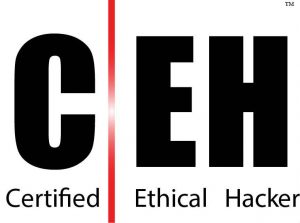

ETHICAL HACKING
Ethical hacking is the way to find out the weaknesses and vulnerabilities in the system or computer network. It is a way to describe the procedure of hacking in an ethical way for any network. The ethical hacker has the good purpose to do it. Actually it has become the general perception in our mind for hacker that he will be bad, fanatic, criminal and unethical.
Basically some of the hacker has even done very badly with some organisations like they have stolen very important information of their customers. In some of the government organisations they have damaged very confidential information like social security numbers and other sensitive information. That is the reason hackers are not having very good reputation. To avoid such conditions many organisation have hired many ethical hackers to keep a track on their system and computer network.
Ethical hackers are supposing to test and check vulnerabilities and weaknesses in the present system. There is one another face of the coin which tells that without hackers the vulnerabilities and holes of software would remain undiscovered [1]. In this paper I have tried to explain the good and bad face of hacker and even of ethical hackers also and what re the different impact on the different areas of our society.
Study showsthat almost 90% attacks happen on the inside which shows that easy it is to invade into the system or network for insiders. I have tried to explore the ethics behind the ethical hacking and the problems lie with this particular field of information technology where security is concerned. Though ethical hacking has become a very upcoming technological subject from the last few years, now the doubt remains the true intentions of the hacker.
Hackers in this context have had a very measurable impact on society. There are several fields in computing where hackers made measurable impact on society. In this paper I have tried to look into different ways how we can make ethical hacking safe and ethical.
ETHICAL HACKING COURSE
MODULE 1: INTRODUCTION TO ETHICAL HACKING
• Information Security Overview
• Information Security Threats and Attack Vectors
• Hacking Concepts, Types and Phases
• Ethical Hacking Concepts and Scope
• Information Security Controls
• Physical Security
• Incident Management
• is Vulnerability assessment?
• Penetration Testing
• Information Security Laws and Standards
MODULE 2: FOOTPRINTING AND RECONNAISSANCE
• Footprinting Concepts
• Footprinting Methodology
• Footprinting Tools
• Footprinting Countermeasures
• Footprinting Penetration Testing
MODULE 3: SCANNING NETWORKS
• Overview of Network Scanning
• CEH Scanning Methodology
MODULE 04: ENUMERATION
MODULE 5: SYSTEM HACKING
• Evaluating Information for System Hacking
• System Hacking Goals
• CEH Hacking Methodology (CHM)
• CEH system Hacking steps
• Hiding Files Covering Tracks
• Penetration Testing
MODULE 6: MALWARE THREATS
MODULE 7: SNIFFING
• Sniffing Concepts
• MAC Attacks
• DHCP Attacks
• ARP Poisomg Spoofing Attack
• DNS Poisoning
• Sniffing Tools
• Sniffing Tool: Wireshark
• Packet Sniffing Tool: Capsa Network Analyser
• Network Packet Analyser
• Countermeasures Sniffing Detection
MODULE 8: SOCIAL ENGINEERING
• Social Engineering Concepts
• Social Engineering Techniques
• Impersonation on Social Networking Sites
• Identity Theft
MODULE 9: DENIAL OF SERVICE
• DoS/DDos Concepts
• DoS/DDoS Attack Techniques
• Botnets
• DDoS Case Study
• Dos/DDos Attack Tools Counter-Measures
• Dos/DDos Protection Tools DoS/DDos Attack Penetration Testing
MODULE 10: SESSION HIJACKING
• Session Hijacking Concepts
• Application Level Session Hijacking
• Network Level Session Hijacking
• Session Hijacking Tools
• Countermeasures and Penetration Testing
MODULE 11: HACKING WEB SERVERS
• Webserver Concepts
• Websetver Attacks
• Attack Methodology
• Webserver Attack Tools Countermeasures, Security Tool
• Webserver Security Tools
MODULE 12: HACKING WEB APPLICATIONS
• Web Application Concepts
• Web Application Threats
• Web Application Hacking Methodology
• Web Application Hacking Tools
• Countermeasures, Security Tool and Penetration Testing
• Web Application Perpetration Testing Framework
MODULE 13: SQL INJECTION
• SQL Injection Concepts
• Types of SQL Injection
• SQL Injection Methodology
• SQL Injection Tools
• Evasion Techniques
• Countermeasures
MODULE 14: HACKING WIRELESS NETWORKS
• Wireless Concepts
• Wireless Encryption
• Wireless Threats
• Wireless Hacking Methodology
• Wireless Hacking Tools
• Bluetooth Hacking
• Counter Measures and Wi-Fi Penetration Testing
• Wireless Security Tools
MODULE 15: HACKING MOBILE PLATFORMS
• Mobile Platform Attack Vectors
• Hacking Android OS
• Hacking iOS
• Hacking Windows Phone
• Hacking Blackberry
• Mobile Device Management (NIDM)
• Mobile Security Guidelines, Tools and Penetration Testing
MODULE 16: EVADING IDS, FIREWALLS AND HONEY POTS
• IDS, Firewalls and honeypot Concepts
• IDS, Firewalls and honeypot Systems
• Evading IDS/Firewa11s
• IDS/Firewa11 Evading Tools
• Detecting Honeypots
• IDS/Firewall Evasion Countermeasures and Penetration Testing
MODULE 17: CLOUD COMPUTING
• Introduction to Cloud Computing
• Cloud Computing Threats
• Cloud Computing Attacks
• Cloud Security Tools and Penetration Testing
MODULE 18: CRYPTOGRAPHY
• Cryptography Concepts
• Encryption Algorithms
• Cryptography Tools
• Public Key Infrastructure (PRI)
• Email Encryption
• Disk Encryption
• Cryptography Attacks and Cryptanalysis Tools
FURTHER DETAILS CONTACT US
8939111234.
